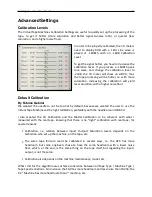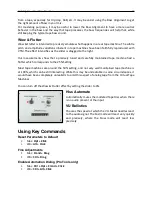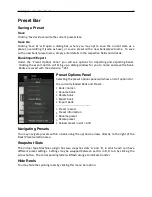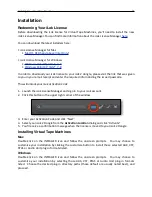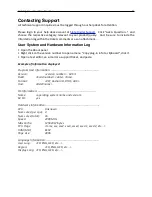
Slate Digital -‐ Virtual Tape Machines 22
Making the Virtual Tape Machines
!
By Fabrice Gabriel
!
ATer the success of the Virtual Console CollecPon, Steven and I were convinced that the sound
of tape was sPll not authenPcally modeled in the digital domain. In fact, it didn’t seem that
anyone had accurately captured the essence and feeling of a real tape machine. We wanted to
change that.
!
I was convinced that I could design an algorithm that would be so close to the tape sound, that
you could not disPnguish a track recorded to the real tape machine versus the same track
processed with the algorithm.
!
The most important thing for us is to have the most absolute authenPc sound. At Slate Digital,
our mission is for people to not be able to differenPate from the real thing, so it's really
important to reproduce faithfully and accurately the exact sound and behavior of a real tape
machine, and here are the reasons.
!
First, our purpose is to make sound replicas, not average sound imitaPons. For years, there have
been a lot of companies who adverPse that they "precisely model" certain pieces of analog
hardware, and sPll today, there are a lot of products which "imitates" the analog sound, rather
than accurately replicaPng it.
!
For me, it's really easy to see in their algorithm what they did and how they did it, what they
missed and where technical issues are. Some people who are not familiar with the original
hardware may not be able to tell the difference. But any professional who has used the real
hardware certainly can.
!
In order to be authenPc, an algorithm must be faithful to every aspect of the original gear it is
intended to replicate. It means that both the original and the model should produce the same
output waveform with the same input waveform, with any kind of waveform. It also means that
the frequency response should be the same in every situaPon, every amplitude.
!
But there are a lot of other aspects, which need to be reproduced, like the dynamics, the
harmonic behavior, the saturaPon characterisPcs, and so on.
!
Most importantly, the scienPfic tests are nothing without real life listening tests. That’s why
Steven and I compare and test the algorithms against the real thing, and then several
experienced mixing and mastering engineers validate them.
!
We stop refining the algorithms when we can’t tell the difference between the original and the
algorithm in a blind listening test.
!
We chose to offer a tape replicaPon because it was clear that tape had not properly been
represented in the digital domain yet.








